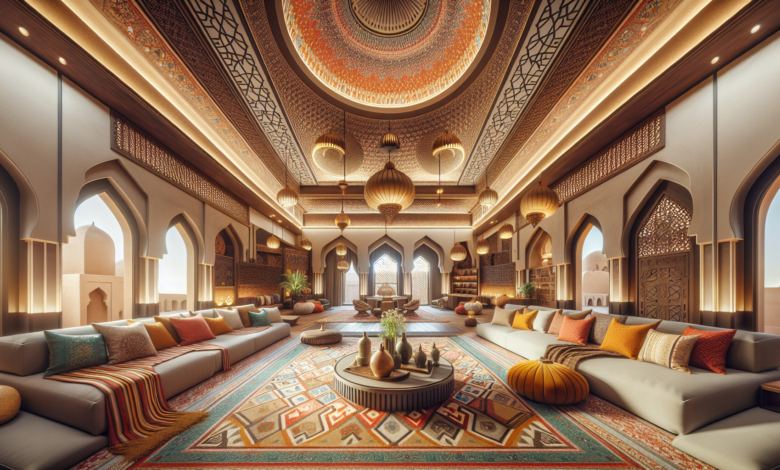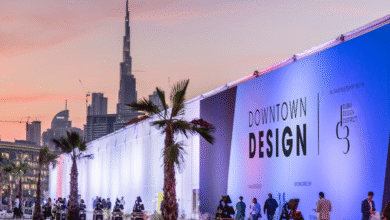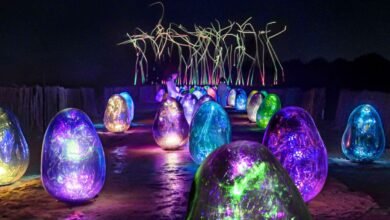
Arabic Interior Mastery: Trends That Are Reshaping Middle Eastern Homes
Arabic interior design is experiencing a renaissance, blending classical interiors and modern innovations to revolutionize Middle Eastern spaces. With elements like domes, archways, and intricately woven textiles intertwining with bold colours and patterns, these designs reflect a rich heritage and contemporary aesthetics.
This article explores the fusion of cultures in modern design, sustainability, and technological integration, alongside the luxury and personalization of Arabic house design. It also delves into the significance of outdoor spaces and biophilic design, illustrating the evolving landscape of Arabic aesthetics.
Blending Cultures in Modern Design
In the realm of Arabic interior design, the synthesis of diverse cultural elements creates a tapestry rich in history and modernity. This blending is not just a merging of styles but a thoughtful integration that respects tradition while embracing contemporary needs.
Key Elements of Cultural Fusion
Historical Influences and Modern Adaptations
The architectural heritage of the Middle East, from the ornate Islamic patterns and calligraphy to the bold archways and domes, is being reinterpreted in modern design. Contemporary materials and techniques are combined with traditional motifs, resulting in spaces that feel both timeless and innovative.
- Incorporating Global Design Elements Modern Arabic design often includes influences from across the world, including Asian minimalism and European elegance. This global approach not only enriches the aesthetic appeal but also caters to the cosmopolitan nature of cities like Dubai and Riyadh.
- Technological Enhancements in Traditional Settings Advanced lighting systems and smart home technologies are being integrated into Arabic interiors, enhancing the functionality without compromising the aesthetic integrity. These modern elements are carefully hidden within traditional designs, preserving the cultural essence.
Material and Colour Integration
- Use of Luxurious Textiles and Rich Colours
- Fabrics like silk and velvet, which reflect luxury and comfort, are staples in Arabic interior design. The colour palette often includes warm hues such as golds, reds, and browns, which are complemented by vibrant blues and greens to add a modern twist.
- Natural Materials and Sustainability
- Organic materials like wood and stone are increasingly used, promoting sustainability, and adding a natural, earthy element to the interiors. This not only aligns with global trends towards eco-friendly designs but also pays homage to the natural landscapes of the Middle East.
Spatial Harmony and Functional Aesthetics
- Strategic Layouts and Multifunctional Spaces
- The layout of modern Arabic homes is carefully planned to maximize functionality while maintaining aesthetic appeal. Spaces are designed to be adaptable, serving multiple purposes, which is a key aspect of modern living.
- Integration of Art and Craftsmanship
- Artisanal crafts such as mosaic tiling and intricate woodworks are prominent in Arabic interiors. These elements are skilfully integrated with modern design techniques, bridging the gap between old and new.
This fusion in Arabic interior design not only revitalizes traditional elements but also sets a foundation for a new, dynamic approach to cultural expression in architecture and interiors.
Incorporating Sustainability and Technology
Sustainability in Design
Renewable Resources and Energy Efficiency
- Utilization of Renewable Energy: The integration of solar panels and wind turbines is becoming commonplace, harnessing natural resources to power homes and buildings sustainably.
- Water-Saving Technologies: Innovations like low-flow faucets and dual-flush toilets significantly reduce water usage, reflecting a commitment to environmental conservation.
Green Building Practices
- Green Roofs and Walls: These installations contribute not only to aesthetic appeal but also to insulation and air quality improvement, reducing urban heat and supporting biodiversity.
- Sustainable Materials: Use of reclaimed wood, bamboo, and recycled glass in construction and decor helps minimize environmental impact while offering unique style elements.
Technology Enhancements in Design
Smart Home Systems
- Automated Lighting and Climate Control: Systems that adjust based on occupancy and time of day enhance comfort while optimizing energy use.
- Interactive Installations: Art installations that react to viewer presence and environmental changes merge technology with cultural expression.
Advanced Manufacturing Techniques
- 3D Printing: This technology allows for custom-designed furniture and fixtures, reducing waste and enabling recycling of materials.
- Virtual Reality: Before actual construction begins, virtual reality offers the possibility to explore and modify designs, ensuring optimal use of resources.
Eco-Friendly Innovations
- LED Lighting: Compared to traditional lighting, LED options offer longer life spans and lower energy consumption.
- Smart Thermostats and Sensors: These devices fine-tune energy use, significantly cutting costs and reducing environmental footprint.
Sustainable Luxury in Middle Eastern Interiors
- Biophilic Design Elements: Incorporating natural elements into interior design not only enhances aesthetic appeal but also improves air quality and personal well-being.
- LEED and Estidama Certifications: These certifications ensure that buildings meet stringent sustainability criteria, promoting healthier and more environmentally friendly living spaces.
By embracing these sustainable practices and technologies, Middle Eastern interior design not only adheres to global standards but also sets new benchmarks for luxury and sustainability in architecture.
Personalization and Luxury
In the vibrant world of Dubai’s luxury interior design, personalization stands as a cornerstone, ensuring that each space distinctively mirrors the client’s personality and preferences. Renowned firms like Buse Dastan Architects and Euphoria Atelier Design Services are at the forefront, offering bespoke design solutions that seamlessly blend opulence with individual style.
Custom-Made Elegance
- Material Selection: Utilizing high-quality materials such as silk, velvet, exquisite leathers, and marble ensures durability and aesthetic appeal.
- Furniture Design: Each piece of furniture is custom-crafted, featuring intricate carvings and made from the finest materials, enhancing the luxury of the space.
- Spatial Planning: Effective space planning is crucial, creating a harmonious flow that integrates various areas of the home or office seamlessly.
Lighting and Ambiance
- Strategic Lighting: The role of lighting is pivotal in sculpting the ambiance of a room, with designs that highlight key architectural features and artwork, thus enriching the luxury feel.
Personal Touches
- Reflecting Individual Tastes: Designs are tailored to reflect the unique tastes of each client, making every project a personalized masterpiece.
- Innovative Features: Integration of maximalism with bold patterns and eclectic styles, along with vintage and retro-inspired pieces, ensures a dynamic yet cohesive interior.
By focusing on these personalized elements, luxury interior design in Dubai not only achieves a high level of sophistication but also ensures that each space tells the unique story of its inhabitants.
Outdoor Spaces and Biophilic Design
Embracing the Outdoors: The Rise of Biophilic Design in the Middle East
The Middle East’s favorable climate for much of the year has significantly influenced the rise in outdoor and biophilic design trends. In cities like Dubai, there’s been a 30% increase in demand for designs that incorporate elements of nature, driven by their positive impact on mental health and well-being. This section delves into how these elements are being integrated into both public and private spaces, enhancing the connection between residents and their natural environment.
Key Features of Modern Outdoor Spaces
- Green Spaces: From intimate rooftop gardens to expansive public parks, green spaces are becoming integral to urban planning in the Middle East.
- Natural Materials: The use of wood, stone, and water features in outdoor design not only adds aesthetic value but also promotes sustainability.
- Shading Devices: To combat the intense sun, designers are innovatively incorporating canopies and other shading solutions that contribute both function and style to the outdoor areas.
Biophilic Design Indoors and Outdoors
- Green Roofs and Walls: In Abu Dhabi, the integration of green roofs and walls is now a standard practice, aimed at increasing the city’s green cover.
- Air Quality and Cognitive Benefits: Incorporating plant life and natural elements indoors is shown to enhance air quality, aid relaxation, and improve cognitive functions like memory retention.
- Material Choices: Employing natural materials in furniture and finishes not only appeals to the senses but also supports environmental sustainability.
Strategic Design for Enhanced Living
- Spatial Planning: Effective interior space planning ensures that residents have unobstructed access to views and natural light, crucial for a true biophilic experience.
- Innovative Architecture: Beyond mere aesthetics, architectural designs are evolving to include biophilic elements that foster a deeper connection with nature, even in arid environments like Riyadh.
This focus on outdoor and biophilic design not only reflects a shift towards more sustainable living but also enhances the quality of life, making the cities of the Middle East leaders in urban design innovation.
Through exploring the intricate blend of tradition and modernity, this article has unfolded the dynamic evolution of Arabic interior design. From the harmonious fusion of cultural elements and the embrace of sustainability and technological advances to the personalized luxury and the ever-increasing significance of outdoor and biophilic design, we’ve seen how Middle Eastern spaces are being revolutionized. These trends don’t just mirror aesthetic shifts; they represent a deeper engagement with heritage, environment, and individual identity, setting new standards for global design practices.
As the field of interior design in the Middle East strides into the future, it carries forward the legacy of its rich past while eagerly adopting innovations that foster more sustainable, personalized, and integrated living environments. This journey underscores a broader implication for architecture worldwide: the potential to create spaces that are at once culturally resonant, environmentally responsible, and profoundly personal. These evolving trends invite architects and designers to continue exploring new horizons, promising an exciting era of growth and creativity in the design world.






